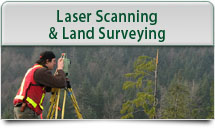 Land surveying plays an important role in land development. No wonder it’s been around for a very long time. In ancient Egypt, ‘rope stretchers’ were surveyors that used knotted stretched cords to measure property demarcations. Thankfully, we’re now long past that point.
Land surveying plays an important role in land development. No wonder it’s been around for a very long time. In ancient Egypt, ‘rope stretchers’ were surveyors that used knotted stretched cords to measure property demarcations. Thankfully, we’re now long past that point.
The ‘Total Station’ theodolite, introduced in 1971, revolutionized the way land surveyors measured distance, elevations, and angles. And until today, they are an essential tool in a land surveyor’s kit.
Over the last two decades, advances in robotics and computerized data collection have further transformed the field. In this post, we look at some of the current trends that will immensely impact the future of land surveying.
Usage of UAV
Unmanned aerial vehicles (UAVs) were once only associated with military applications. But thanks to technological advances, their inhibiting costs have been dramatically reduced. Consequently, they’re finding applications in many other sectors, including land surveying.
Drones have several advantages over both terrestrial surveying teams and manned aircraft. Some of which include:
1) Faster: a drone covers a far larger land area in a shorter time.
2) Accessing difficult terrains: Crossing some terrain put personnel at a safety risk. With a drone, such areas can be surveyed without risking the safety of anyone.
3) Robust data collection: Drones can be used to collect a wide range of data. Some of which include 2D and 3D orthomosaic maps, 3D models, thermal maps, multispectral maps, and more.
4) Better integration with software: Drone data can easily be integrated with CAD software to build models for land development.
With this greater precision, reduced cost, and better efficiency, UAVs will only increase in adoption.
Mobile 3D Mapping
Through the combination of advanced imagery, sophisticated measurement tools, and several mobile transportation platforms, Mobile 3D Mapping enables land surveyors to visualize, record, measure, and understand surrounding terrain.
The flexibility it offers is a massive time saver. What’s more, mobile 3D mapping removes the need for cumbersome equipment when collecting geospatial data. Versatile tools, handheld devices, and more makes it easier for land surveyors to collect and process data in real-time.
UAVs are a prime example of mobile 3D mapping, making it easy to collect geospatial data even without any personnel present.
What’s more, the tremendous amount of money pouring into the Mobile 3D mapping space will improve sensors, vehicle connectivity, and onboard processing. Ultimately leading to the proliferation of millions of mobile 3D mapping units worldwide that will provide abundant spatial information.
Data accessibility via LiDAR
LiDAR stands for Light Detection and Ranging. It is a form of 3D scanning that has been around since the 1960s and has for a long time be used to collect detailed 3D survey information about the earth’s physical characteristics.
LiDAR maps are typically gotten by attaching laser scanners to airplanes and helicopters to survey large areas of land. Other types of LiDAR include terrestrial (which maps topographical ground measurements) and Bathymetric LiDAR (which measures elevation in seafloors and riverbeds).
LiDAR has a wide range of applications, including agriculture, archeology, atmosphere, astronomy, and even physics – thanks to its ability to offer real-time point clouds. To cite an example of LiDAR’s application in archeology, it was used to rediscover the lost city of Mahendraparvata in the Cambodian mountains.
Although LiDAR is still expensive and reserved for only sophisticated land surveying projects, future trends show that the cost will reduce. When that happens, LiDAR will become more common in survey projects.
Cloud Storage
Scanning technologies are becoming more sophisticated in the last few years. Consequently, data is produced at an unprecedented rate. For the average surveying company, managing this data through its in-house IT infrastructure is becoming burdensome. On-site data storage is very expensive to scale.
That’s why many companies have been turning to cloud storage. Cloud storage facilities are owned by third parties that focus solely on protecting the integrity of their client’s data, thereby removing the burden of data protection from surveying companies. Hence, they can focus on what matters. This also helps to save costs on building new in-house IT infrastructure.
Also, cloud storage allows for better collaboration and efficiency. Data need not be needlessly replicated as they can be accessed from a single source. And since there’s centralized data storage, involved parties – including contractors, engineers, surveyors, and other stakeholders – can easily access field data like scans irrespective of their locations, making collaboration easier than ever.
Wrap Up
These are exciting times in the field of land surveying – thanks to a litany of technologies, from drones to robotics to LiDAR, that are enhancing land surveying processes. Artificial intelligence (AI) is another new technology that will take over a large chunk of tasks undertaken by surveyors in the future. The future for land surveying seems bright, but only time will tell what turn it takes.
If you’re looking for more information regarding land surveying, please reach out to us HERE today. We look forward to assisting you in any way possible.








